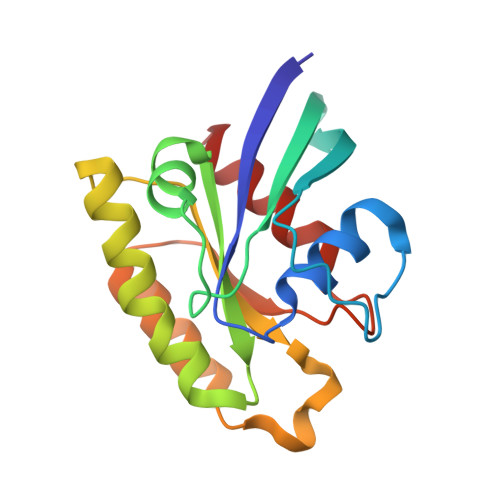The structure and conformational switching of Rap1B
Noguchi, H., Ikegami, T., Nagadoi, A., Kamatari, Y.O., Park, S.Y., Tame, J.R., Unzai, S.(2015) Biochem Biophys Res Commun 462: 46-51
- PubMed: 25935485
- DOI: https://doi.org/10.1016/j.bbrc.2015.04.103
- Primary Citation of Related Structures:
3X1W, 3X1X, 3X1Y, 3X1Z - PubMed Abstract:
Rap1B is a small GTPase involved in the regulation of numerous cellular processes including synaptic plasticity, one of the bases of memory. Like other members of the Ras family, the active GTP-bound form of Rap1B can bind to a large number of effector proteins and so transmit signals to downstream components of the signaling pathways. The structure of Rap1B bound only to a nucleotide has yet to be solved, but might help reveal an inactive conformation that can be stabilized by a small molecule drug. Unlike other Ras family proteins such as H-Ras and Rap2A, Rap1B crystallizes in an intermediate state when bound to a non-hydrolyzable GTP analog. Comparison with H-Ras and Rap2A reveals conservative mutations relative to Rap1B, distant from the bound nucleotide, which control how readily the protein may adopt the fully activated form in the presence of GTP. High resolution crystallographic structures of mutant proteins show how these changes may influence the hydrogen bonding patterns of the key switch residues.
- Graduate School of Medical Life Science, Yokohama City University, 1-7-29 Suehiro, Yokohama, Kanagawa 230-0045, Japan.
Organizational Affiliation:



















